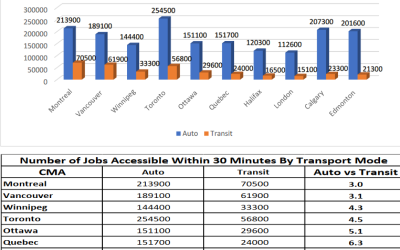Executive Summary
The 1944 Chicago International Aviation Conference, known as the Chicago Conference, was convened to determine how best to deal with air transportation between countries. A multilateral or borderless trade was proposed by the United States (hereafter U.S.) but it failed to emerge as the accepted approach in Chicago. From that time on, countries have dealt with each other on a bilateral or country-to-country basis. This has hamstrung the industry since.
A bilateral trade in air services means that each country has the right to require that the airline of the country with whom it is negotiating be “substantially owned or effectively controlled” by that country. By its very definition, this prevents airlines around the world from accessing foreign capital and prevents consolidation beyond a country’s border.
These artificial blocks also deter new entrant airlines, prevent trans-border consolidation and encourage government subsidies of its national flag carrier. They affect pricing, scheduling and competition. Air transportation, the most global of industries, remains nation-bound.
The paper reviews this background as well as the strategies that have developed by airlines to work-around the constraints of the bilateral system. The first of such strategies was the 1993 grant of anti-trust immunity between KLM Royal Dutch Airlines and Northwest Airlines. That de facto merger gave birth to the alliance strategy. Currently, the metal neutral joint venture is the vehicle of choice. The paper finds each strategy to be problematic.
The emergence of a unified and single European Community rapidly advanced a liberalization agenda. A borderless Europe allowed airline consolidation within the European Union (hereafter E.U.). Almost simultaneously, consolidation of airlines within the United States, from six to its now three trunk airlines, took place.
The paper examines some of the suggestions as to how liberalization could be achieved. Although a comprehensive E.U.-U.S. agreement would have been of such strength that it would have resulted in the collapse of the Chicago bilateral system (referred to as the ‘big bang approach to liberalization’), the 2010 agreement between the two avoided the core question of foreign ownership and control of the airlines of the other and thus failed in its attempt at liberalization.
A more gradual path to liberalization may lie ahead through a number of avenues: the development of new agreements or pacts between like-minded countries; amendment to the Chicago Convention; or through recourse to the Annex on the Trade in Air Services under the General Agreement on Trade in Services (GATS).
While liberalization is unfolding, another event is simultaneously taking place. The Gulf airlines, with their long-haul technology and geographic centrality, have changed established global patterns. Their strength has resulted in new arrangements and partnerships, all of which could influence the speed of liberalization. So great are these undercurrents of change in the aviation sector that analysts claim “predictions of the shape of the industry over the next five years are dangerous.


